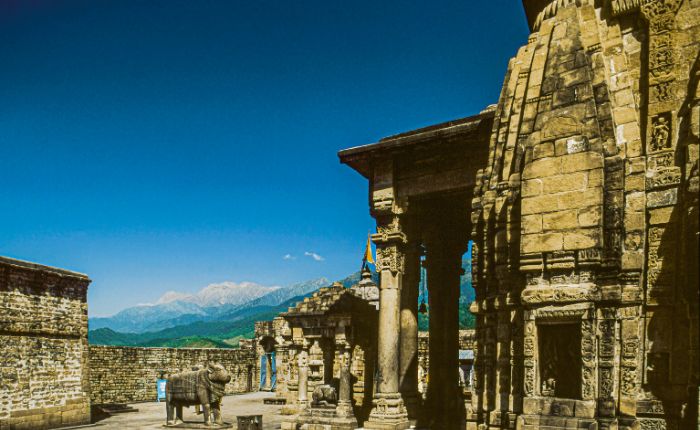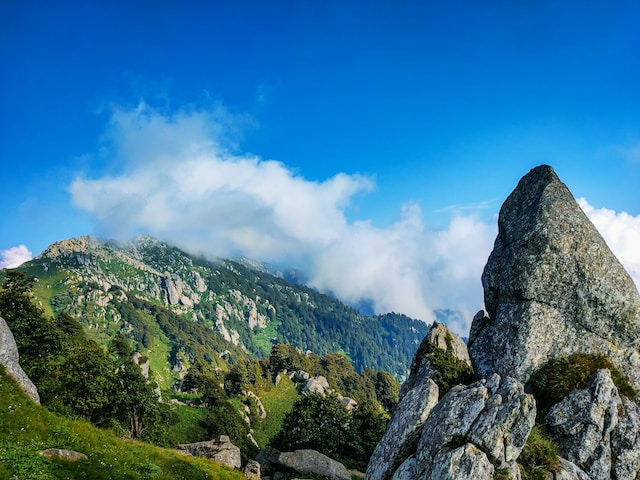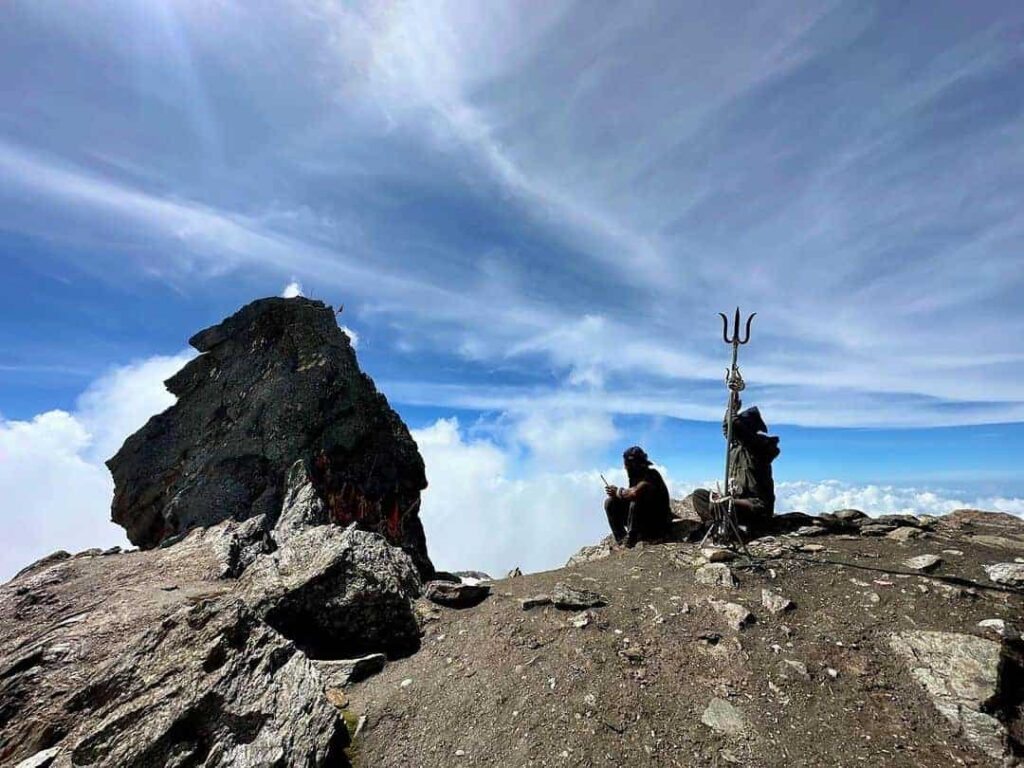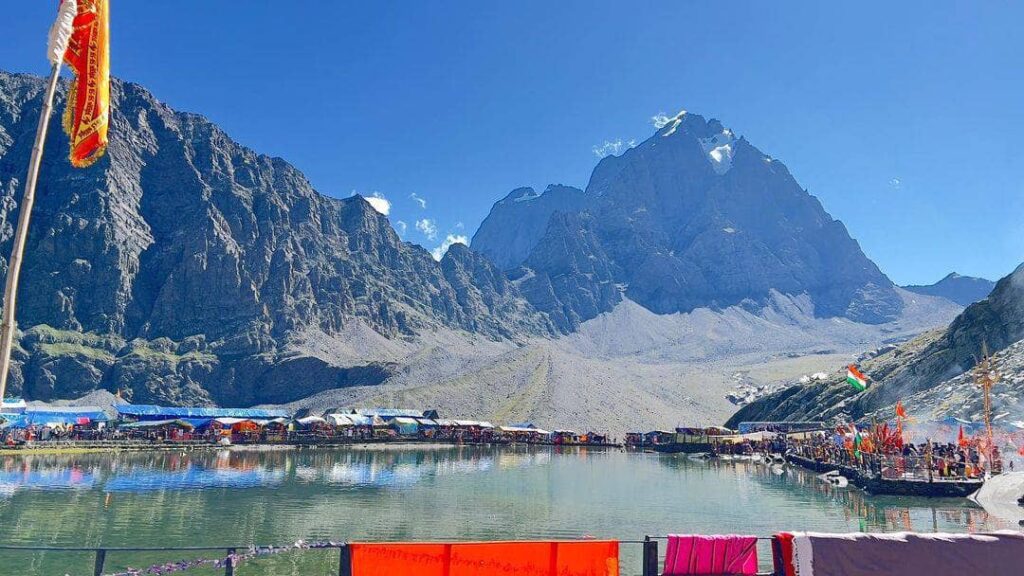Himachal Pradesh is a land blessed with spectacular natural beauty and a deep spiritual past, ensconced amid the majestic Himalayas. Several revered shrines devoted to Lord Shiva can be found among the state’s countless temples. In this post, we go on a spiritual journey to 5 notable Shiv temples in Himachal Pradesh, each with its own blend of holiness, history, and natural splendour.
Top 5 Shiva temple in Himachal Pradesh:
1. Baijnath Temple, Baijnath:
The Baijnath Temple, located in the Himachal Pradesh district of Kangra, is an ancient and famous shrine dedicated to Lord Vaidyanath, a manifestation of Lord Shiva. The temple draws worshippers, history buffs, and spiritual seekers from all around because of its rich historical and architectural value.

Location and How to Reach:
The Baijnath Temple is located in the scenic town of Baijnath, some 50 kilometres east of Kangra and 16 kilometres west of Palampur. The town is well-connected by road, with regular buses and taxis running from adjacent cities and towns such as Dharamshala and Pathankot. Pathankot Railway Station is the nearest railway station, while Gaggal Airport in Kangra is the nearest airport.
Trekking to Baijnath Temple:
Trekking to Baijnath Temple can be an amazing experience for adventurers and nature lovers. The walk begins in Bir, Kangra district, and takes you through gorgeous scenery, attractive villages, and lush forests. The whole distance of the journey is about 14 km, and it takes about 6-7 hours to finish, depending on individual fitness levels and the pace of the trek.
Trekkers can see the spectacular grandeur of the Dhauladhar mountain range, lush green meadows, and the fascinating Kangra Valley while on the hike. It is best to embark on the walk with the help of a local guide who can navigate the path and provide information on the surrounding natural and cultural features.
Number of Days Required:
Day trips from adjacent towns like Dharamshala or Palampur can be planned to visit Baijnath Temple. Those aiming to do the walk from Bir, on the other hand, should allow at least two days for the entire experience. This covers one day for the walk to Baijnath Temple and another for the return trip.
Mythology and Historical Significance:
According to legend, Lord Shiva, in the form of Vaidyanath (the Divine Healer), lived here to heal Ravana, the demon king who sought his blessings and remedies in order to achieve immortality. This mythology inspired the temple’s name, Baijnath.
The Baijnath Temple’s historical significance stems from its affiliation with the reign of the Katyuri dynasty, which governed this region throughout the mediaeval period. During their reign, the temple complex was a significant centre of religious and cultural activities.
2. Churdhar Temple, Sirmaur:
Churdhar Temple is another shiva temple in himachal pradesh, located in Sirmaur district, is a revered pilgrimage site devoted to Lord Shiva. It is the tallest peak in the state’s outer Himalayas, rising 3,647 metres above sea level.
Churdhar Temple’s spiritual ambience and panoramic vistas of the surrounding landscapes draw devotees, nature enthusiasts, and trekkers.

Location and How to Reach:
Churdhar shiv Temple in himachal is located in the Sirmaur district’s beautiful town of Churdhar. Nahan, the nearest large town, is well-connected by road. From Nahan, take a taxi or a local bus to Nauradhar village, which serves as the base camp for the hike to Churdhar Temple. The community is about 60 kilometres away from Nahan.
Trek Distance and Duration:
The trip to Churdhar Temple is both difficult and rewarding. The walk begins in Nauradhar and travels around 16 kilometres to the temple. The trail winds through dense forests, lush meadows, and steep ascents, providing breathtaking vistas of adjacent valleys and snow-capped summits. The trek typically takes two days, with an overnight stay at the Bhagani camping area or the Churdhar summit.
Number of Days Required:
It is recommended that you set aside at least two days for the Churdhar Temple hike. Trekkers normally start early from Nauradhar and arrive at the camping spot or the summit by late afternoon on the first day. The overnight stay offers for rest and restoration in the middle of the tranquil natural surroundings. Trekkers return to Nauradhar on the second day, finishing the journey.
Historical Myths and Significance:
Churdhar Temple is historically and mythologically significant. It is claimed that Lord Shiva pondered here for many years. The name “Churdhar” is derived from “Churasi,” which means “84” in Hindi, referring to the belief that the peak is home to 84 Siddhas (enlightened beings). It is considered a sacred spot and attracts worshippers seeking spiritual peace and Lord Shiva’s blessings.
The temple itself is a tiny edifice that houses Lord Shiva’s statue. It is surrounded by a serene atmosphere that encourages worshippers to reflect and connect with the divine. The panoramic views from the summit, which include the snow-capped peaks of the Great Himalayan Range, contribute to the spiritual experience and inspire awe and devotion.
Churdhar Temple has cultural significance for the surrounding communities as well. It is widely honored at the annual festival of “Churdhar Jatra,” which takes place in June or July. Pilgrims from adjacent villages and towns make the difficult journey to the temple, bearing Lord Shiva’s palanquin (doli) amidst traditional music, dance, and ceremonies.
3. Kinner Kailash Temple, Kinnaur:
Kinner Kailash famous temple in Himachal Pradesh belongs to Kinnaur district, is a revered pilgrimage place tucked in the gorgeous Kinnaur Valley. It is considered one of the most sacred spots in the region, perched at an elevation of 4,650 metres, and carries tremendous religious significance for both Hindus and Buddhists.

Location and How to Reach:
Kinner Kailash Temple, in Himachal Pradesh’s Kinnaur district, is a revered pilgrimage place tucked in the gorgeous Kinnaur Valley. It is considered one of the most sacred spots in the region, perched at an elevation of 4,650 metres, and carries tremendous religious significance for both Hindus and Buddhists.
Trek Distance and Duration:
Kinner Kailash is a famous shiv Temple in himachal and the journey to this temple is both physically and spiritually demanding. The hike begins at Kalpa and takes around 9 kilometres to reach the temple. The trail winds over high hills, rocky terrain, and snow-covered terrain, providing stunning views of the Kinnaur Valley. The total duration of the journey varies based on individual fitness levels and acclimatization, but it usually takes two to three days to complete.
Number of Days Required:
To undertake the Kinner Kailash Temple trek, it is advisable to allocate a minimum of three to four days. This includes one day for acclimatization and exploration in Kalpa, one day for the ascent to the temple, one day for the return trek, and an additional day as a buffer for any unforeseen circumstances.
Historical Myths and Significance:
Kinner Kailash Temple is historically and mythologically significant. It is thought to be Lord Shiva’s winter residence, and the mountain summit resembles Lord Shiva’s legendary abode, Mount Kailash. Both Hindus and Buddhists regard the mountain as sacred, believing it to be a manifestation of Lord Shiva’s divine force.
Devotees travel to Kinner Kailash Temple in search of blessings and spiritual enlightenment. Circumambulating the sacred mountain (parikrama) is seen to be a sort of penance that can lead to spiritual emancipation. The summit is normally circumambulated in a clockwise direction and takes three to four hours to complete.
Pilgrims pass through various religious sites along the way, including Charang, a town noted for its mediaeval monastery and wooden carvings. These landmarks enhance the spiritual experience and provide insights into the region’s rich cultural past.
4. Shrikhand Mahadev, Kullu:
Shrikhand Mahadev another famous temple in himachal pradesh , located in Himachal Pradesh’s Kullu district, is a revered pilgrimage destination devoted to Lord Shiva. It is one of the most difficult and spiritually significant treks in the region, located at an elevation of 5,155 metres. The hike to Shrikhand Mahadev is famous for its rough terrain, beautiful landscapes, and deeply ingrained historical myths.
Read now about pilgrimage destination in shimla

Location and How to Reach:
Shrikhand Mahadev is located about 72 kilometres from Kullu, near the town of Jaon. To access the trek’s base camp, travel to Rampur in Shimla district, which is well-connected by road from major cities. Local transport is provided from Rampur to Jaon, the trek’s beginning point.
Trek Distance and Duration:
The trek to Shrikhand Mahadev is regarded as extremely difficult, both physically and mentally. The total trek distance is about 35 km, although the exact distance completed varies on the route chosen and the trail condition. The trail is steep and rocky, with a major altitude climb.
The walk is normally performed in three to four days. It is separated into numerous phases, each spanning a different distance and altitude. The journey includes camping stops at places like Thachru, Bhim Dwar, and Parvati Bagh. Trekkers typically stay at these campsites for a day or two, allowing time for rest, acclimatisation, and taking in the natural beauty of the surrounds.
Number of Days Required:
It is recommended that you set aside at least 6-7 days for the Shrikhand Mahadev hike. This comprises one day for transit to the base camp, three to four days for the trek, and one day for the return trip. The extra days allow for acclimatization and buffer time in the event of inclement weather.
Historical Myths and Significance:
Shrikhand Mahadev is historically and mythologically significant. According to mythology, Lord Shiva himself meditated at this sacred location. Shrikhand Mahadev’s snow-covered mountain is revered as Lord Shiva’s heavenly dwelling.
Devout pilgrims seeking blessings and spiritual enlightenment travel to Shrikhand Mahadev. Completing the difficult trip and reaching the summit is thought to be a test of one’s devotion and dedication to Lord Shiva. Only those with pure intents and strong faith are considered to be able to accomplish the difficult voyage.
Shrikhand Mahadev’s peak is characterized by a naturally formed Shiva lingam, which is considered extremely sacred. At the peak, devotees worship and perform rituals in order to obtain divine blessings and spiritual fulfilment.
5. Manimahesh Temple, Chamba:
Manimahesh Temple, located in the scenic town of Bharmour in the Himachal Pradesh district of Chamba, is a well-known and revered pilgrimage site devoted to Lord Shiva. This famous shiv temple in himachal, nestled among snow-capped peaks and surrounded by spectacular natural beauty, bears enormous religious significance for believers and trekkers alike.

Location and How to Reach:
The Manimahesh Temple is located near Bharmour, about 82 kilometres from Chamba. To get to Bharmour, take a taxi or bus from Chamba, which is well-connected to major Himachal Pradesh cities. Pathankot is the nearest railway station and the nearest airport is at Dharamshala. A trekking track leads from Bharmour to the temple.
Trek Distance and Duration:
The journey to Manimahesh Temple is both physically and spiritually demanding. The trip starts in Hadsar, which is around 13 kilometres from Bharmour. The trail ascends from Hadsar through magnificent sceneries, including lush green meadows, rushing streams, and deep woodlands. The whole distance between Hadsar to the temple is around 13 km.
The trek’s time will vary based on the individual’s fitness condition and acclimatization. The walk often takes two to three days to complete. Some hikers choose to stop for the night at Dhanchho, a midway campground, before continuing their ascent to the temple.
Historical Myths and Significance:
Manimahesh Temple is historically and mythologically significant. Legend has it that Lord Shiva performed his cosmic dance, the “Tandava,” at this sacred site. Lord Shiva is claimed to have built the gorgeous Manimahesh Lake, which is located right below the temple. The peaceful waters of the lake reflect the beautiful Mount Kailash, which is believed to be Lord Shiva’s dwelling.
Only the most faithful and spiritually prepared pilgrims are thought to be able to catch a divine view of the Manimahesh peak, which is considered immensely sacred. Every year, during the auspicious months of August or September (according to the Hindu calendar), devotees embark on the difficult “Manimahesh Yatra” trip to seek blessings and pay respect to Lord Shiva.
During the yatra, worshippers meet in Bharmour and travel to Hadsar to begin the trek. The air is charged with religious zeal and cries of “Har Har Mahadev.” The final leg of the journey is considered the most difficult, with steep inclines and rocky terrain. However, the sheer dedication and the breathtaking scenery along the route make it a genuinely unforgettable experience.
Conclusion:
Himachal Pradesh is home to several majestic Shiva temples, as well as breathtaking landscapes and deep spiritual roots. Pilgrims and trekkers can experience a unique blend of sanctity, history, and natural beauty at these temples, which include Baijnath Temple in Baijnath, Churdhar Temple in Sirmaur, Kinner Kailash Temple in Kinnaur, Shrikhand Mahadev in Kullu, and Manimahesh Temple in Chamba.


